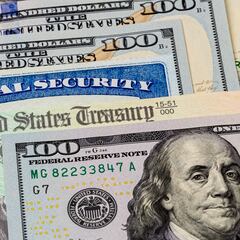Will the Fed increase rates again in September? This is what the experts think
The Federal Open Market Committee will wrap up its September meeting on Wednesday. Here’s what the experts think policymakers will decide on interest rates.

The Federal Reserve has aggressively raised its benchmark lending rate since march 2022, going from near zero to the range of 5.25% to 5.50%. Of the past twelve meetings policymakers have decided on raising interest rates, only in June this year was an increase not implemented. The rapid tightening of monetary policy is intended to bring inflation back to the US central bank’s target after peaking last summer at a four-decade high.
When the Federal Open Market Committee (FOMC) wrap up their September meeting on Wednesday, it’s expected that Chair Jerome Powell will announce that interest rates will remain steady for now. Interest rate hikes take about a year to be felt across the whole of the economy, so experts are forecasting that the US central bankers want to wait and see how the higher cost of borrowing is affecting the US economy.
Will the Fed increase rates again in September? This is what the experts think
Hours before the FOMC is set to announce its decision on raising interest rates or pausing for the second time this year, financial markets are nearly unanimous in their expectation that the Federal Reserve will hold its benchmark lending rate steady this month. Based on data from the CME FedWatch tool 99% of interest rate traders are betting on a pause at Septembers meeting. Fed officials have been expressing the sentiment that it would be prudent to hold rates steady for now in order to see how the increased rates are working.
Options traders are seeking protection from higher interest rates ahead of Wednesday’s Federal Reserve policy decision https://t.co/9bjKrFc3rc
— Bloomberg Markets (@markets) September 19, 2023
Investors, however, will be listening to what Chair Powell has to say about the Fed’s economic projections when he addresses the press post-FOMC meeting. The prediction is that compared to previous estimates, there will be the expectation of stronger economic growth and lower unemployment to round out the year.
As the Fed chair has said previously at the post-FOMC meeting press conferences, there may be the need for at least one more additional rate hike yet this year. That could come in November when policymakers meet again based on new data between now and then. However, currently, over three quarters of traders are predicting that the Fed will continue to maintain its benchmark lending rate at the next meeting finishing on 1 November.
Where will inflation be at the end of 2023?
There are still some uncertainties that could throw a wrench in the Fed’s efforts to bring inflation down to its 2% target. Energy prices are rising again as OPEC has been cutting production. However, the Fed is more focused on core inflation, which strips out volatile energy and food prices.
It feels like it could be a while before we can declare victory on inflation despite moderation, according to Moody’s Analytics economist @Markzandi. pic.twitter.com/9ArDFbDgQ9
— Yahoo Finance (@YahooFinance) September 6, 2023
Speaking to CNN, Moody’s Analytics chief economist Mark Zandi said: “The Fed is obviously most focused on core, but they’re not going to ignore what’s going on with energy prices, particularly if the higher gasoline prices begin to affect inflation expectations and wage demands, which is a real possibility.”
Related stories
And while policymakers are keeping an eye on wage growth and the tight labor market, there are two of the key areas that are expected to improve by the end of the year. The price increases in cars and housing have been decelerating after significant surges as a result of bottlenecks created by the pandemic. Further slowing is expected through the end of 2023 which bodes well for overall inflation.
Researchers at the Federal Reserve in Chicago argued in a recent paper that the data shows “the effects of the past tightening on inflation have almost run their course.” They predict that “the current monetary policy stance as well as other forces in the economy, indicates that inflation will return to near the Fed’s target by mid-2024.”


